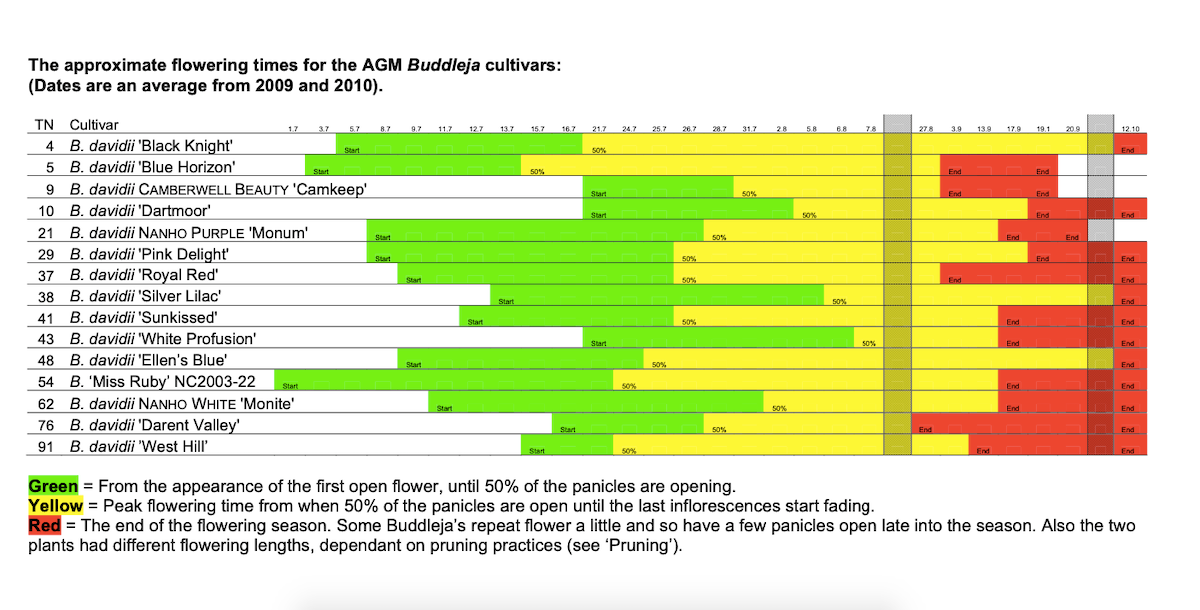Buddleja davidii 'Royal Red'
Approx. 0.5 litre pot
About this cultivar:
Buddleja 'Pink Delight' has the Royal Horticultural Society Award of Garden Merit (RHS AGM), first awarded in 1950, and what did they say in the 2008-2010 trial notes?: 'A good colour, the best red of the older cultivars. Reasonable habit.'
It is an old American cultivar raised by Karle A. Lucal, introduced by the Good & Reese nursery, Ohio, in 1942. It has become one of the most successful buddleja cultivars of all time. In 1997, 'Royal Red' was ranked 9th best in a public poll of 57 Buddleja conducted by the University of Georgia.
The species Buddleja davidii also called butterfly-bush, orange eye, or summer lilac, is a species of flowering plant native central China and Japan. It is widely used as an ornamental plant, and many named cultivars are available. Buddleja davidii entered commerce via the French nursery Vilmorin in the 1890s. It is named after the French missionary and explorer in China, Father Armand David, who was quite a prolific naturalist and botanist and who apparently sent back a Giant Panda to Paris. The Giant Panda has yet to enter commerce.
- Position: Full sun, partial shade
- Soil: Almost any soil, grows well in Ballyrobert
- Flowers: July, August, September
- Other features: Royal Horticultural Society Award of Garden Merit (RHS AGM), Grows well in Ballyrobert
- Hardiness: H6 - Hardy in all of UK and northern Europe (-20 to -15°C), Fully hardy - grows well in Ballyrobert!
- Habit: Clump forming, bushy
- Foliage: Deciduous
- Height: 150 - 200 cm (5 - 6.5 ft)
- Spread: 150 - 200 cm (5 - 6.5 ft)
- Time to full growth: 5 to 10 years
- Plant type: Herbaceous Perennial, shrub
- Colour: Green, pink, red
- Goes well with: Asters, Veronicastrum, Echinops, Sidalcea, and perhaps even some grasses. I like the spikey types contrasted with other flower spikes. Though in general they will likely end up a specimen plant on their own, providing some dried out structure at the back of a border over the autumn and winter.
About this genus:
Buddleja is a genus comprising over 140 species of flowering plants endemic to Asia, Africa, and the Americas. The name bestowed by Linnaeus posthumously honoured the Reverend Adam Buddle (1662–1715), an English botanist and rector, at the suggestion of Dr. William Houstoun (1695–1733), a Scottish surgeon and botanist who collected plants in the Americas. Houstoun sent the first plants to become known to science as buddleja (Buddleja americana) to England from the Caribbean about 15 years after Buddle's death. I don’t think there is any other connection with Buddle and the plant, I suspect Houstoun just thought he was a really great guy and Linnaeus agreed.
The botanic name has been the source of some confusion. By modern practice of botanical Latin, the spelling of a generic name made from 'Buddle' would be Buddleia, but Linnaeus in his Species Plantarum of 1753 spelled it Buddleja, with the long i between two vowels, common in those days. The International Code of Botanical Nomenclature has gradually changed to incorporate stricter rules and as of the 2006 edition requires that Linnaeus' spelling should be followed in this case. Thus, the pronunciation of the long i in Buddleja as j is a modern error. Bud-lee-a not bud-lee-ja. I thjnk.
Nearly all the species are shrubs less than 5 m (16 ft) tall, but a few qualify as trees, the largest reaching 30 m (98 ft). In the garden the height and spread can be partly controlled by pruning.
Both evergreen and deciduous species occur, in tropical and temperate regions. In most species the leaves are lanceolate (lance like) and arranged in opposite pairs on the stems. The flowers of the Asiatic species are mostly produced in terminal panicles (spike/cone like flower clusters) the American species more commonly as cymes (flat-topped flower clusters).
They normally flower in late summer. The colour of the flowers varies widely, from mostly pastel pinks and blues in Asia, to vibrant yellows and reds in the New World, while many cultivars have deeper tones. The flowers are generally rich in nectar and often strongly honey-scented. The fruit is a small capsule, sometimes like a berry.
Several species and crosses have become staples of the modern garden, which is why you are here I guess. Not only are they attractive to gardeners - Buddleja are commonly known as 'butterfly bushes' owing to their attractiveness to butterflies. They are also attractive to other insects, but ‘Insect Bush’ doesn’t have the same appeal.
The most popular cultivated species is Buddleja davidii from central China, named for the French Basque missionary and naturalist Père Armand David. Other common garden species include the aforementioned Buddleja globosa, grown for its strongly honey-scented orange globular inflorescences, and the weeping Buddleja alternifolia. But often we will be talking about hybrids bred for the ornamental garden.
Good plant combos include Asters, Veronicastrum, Echinops, Sidalcea, and perhaps even some grasses. I like the spikey types contrasted with other flower spikes. Though in general they will likely end up a specimen plant on their own, providing some dried out structure at the back of a border over the autumn and winter.
Some species commonly escape from the garden. Buddleja davidii in particular is a great coloniser of dry open ground. In urban areas in the British Isles, it often self-sows on waste ground, car parks, old masonry, railway lines, derelict factory sites, etc. Not that anyone really complains! It also does well also in our wet ground. So, as you can gather it is not a difficult plant (grows almost anywhere) given a bit of sun every now and then.
Keep deadheading if you want more and more flowers later in the season. You don’t need too but the butterflies will thank you for it.






